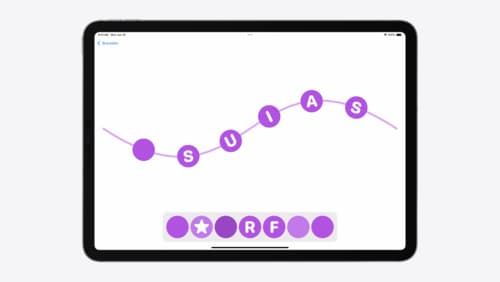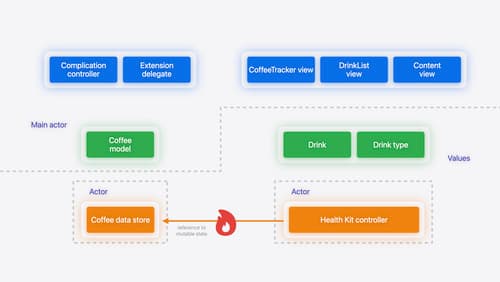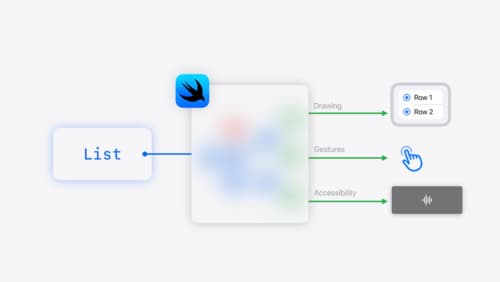how to handle state in swiftui across files
Asked on 2024-10-17
1 search
To handle state in SwiftUI across files, you can utilize several state management tools provided by SwiftUI, such as @State, @Binding, and @ObservedObject. Here's a brief overview of how these can be used:
-
@State: This is used to create a new internal source of data for a view. SwiftUI manages the storage and provides it back for the view to read and write. It's suitable for simple state management within a single view.
-
@Binding: This creates a two-way reference to the state of another view. It allows you to pass state between views, enabling a child view to read and write the state of a parent view.
-
@ObservedObject: This is used for more complex state management where you need to share state across multiple views. You define a class that conforms to the
ObservableObjectprotocol and use@Publishedproperties within it. Views that need to observe changes to this state use@ObservedObject.
In the SwiftUI essentials session, it is explained how SwiftUI manages state and updates views when state changes. The session also covers how to use @State and @Binding to manage state within and across views.
For more detailed information, you can refer to the SwiftUI essentials session, which discusses the fundamentals of views and state management in SwiftUI.

Enhance your UI animations and transitions
Explore how to adopt the zoom transition in navigation and presentations to increase the sense of continuity in your app, and learn how to animate UIKit views with SwiftUI animations to make it easier to build animations that feel continuous.

Migrate your app to Swift 6
Experience Swift 6 migration in action as we update an existing sample app. Learn how to migrate incrementally, module by module, and how the compiler helps you identify code that’s at risk of data races. Discover different techniques for ensuring clear isolation boundaries and eliminating concurrent access to shared mutable state.

SwiftUI essentials
Join us on a tour of SwiftUI, Apple’s declarative user interface framework. Learn essential concepts for building apps in SwiftUI, like views, state variables, and layout. Discover the breadth of APIs for building fully featured experiences and crafting unique custom components. Whether you’re brand new to SwiftUI or an experienced developer, you’ll learn how to take advantage of what SwiftUI has to offer when building great apps.
